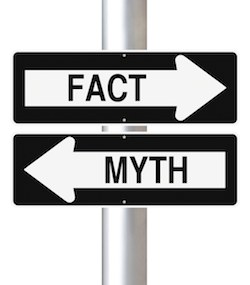
Perspectives on Provisional Patent Applications; 15 Years Post-GATT
© 2009, Gallagher & Dawsey Co., LPA
January 2009
2009 will mark the 15th year since the patent provisions of the Uruguay Round of the 1994 General Agreement on Tariffs and Trade (GATT) were signed into U.S. law. Since June 8, 1995, U.S. patent applicants have had the ability to file Provisional Patent Applications (PPAs). What have we learned in that time?
Changes in the patent laws under GATT provided that the term of U.S. patents would begin on the date of grant and end 20 years from the filing date. This change in the U.S. patent term measurement would have put U.S. inventors at a disadvantage to non-U.S. inventors. For example, an applicant who filed in a foreign country and one year later file in the U.S. (claiming priority to the foreign application) would get a patent term that extended 21 years from his earliest filing date (the filing date of the foreign application). However, an applicant who files first in the U.S. obtains a patent term that only extends 20 years from his earliest filing date. PPAs acted to neutralize this disadvantage, and to provide for priority to provisional applications without triggering the 20-year clock on the patent term.
If a provisional patent application is filed, then a non-provisional U.S. utility patent application may be filed within one year, claiming priority from the provisional application. PPAs cannot claim priority to another application.
A provisional application differs from a regular application in a number of ways:
1. Provisional applications are not examined on their merits and cannot mature into issued patents Therefore, there is really no such thing as a “Provisional Patent;” there are only “Provisional Patent Applications.”
2. The official filing fees are lower: $110 for small entities, and in rare cases, a $135 fee for every fifty pages in excess of 100 pages in the application.
3. A PPA does not need to include claims or discuss the prior art. However, it does require a full and enabling description of the invention.
4. A PPA cannot claim priority from other applications. However, a regular utility patent application can claim the benefit of multiple provisional applications provided that the regular patent application is filed within one year of the first of any claimed PPAs.
On first look, it might seem that filing a PPA would be a basic procedure of choice for most applicants, but this is not so. There are a number of significant disadvantages that can often outweigh any advantage to the filing of a PPA.
Here are some of the advantages in filing a PPA:
1. PPAs are relatively inexpensive to file. Since they are not examined, the procedural rules governing the mechanics of preparing patent descriptions, drawings, and claims are not followed, which make them much easier for inventors to file themselves.
2. If a PPA is followed by a timely filed non-provisional utility application, the patent that might eventually issue will have an effective life which might be as long as 21 years from the filing date of the provisional application.
3. A regular utility patent application filed claiming priority to a PPA does not have to be identical to the provisional application it replaces. New material can be added, much as can be done in a continuation-in-part application. Of course, any such new material will receive the priority date of the filing date of the utility application, as it will not have been supported by the original PPA.
On the other hand, here are some of the disadvantages in filing a PPA:
1. Since provisional patent applications are easy to file, they are often filed quickly and with incomplete disclosures. Such PPAs may not later support the kind of invention embodiments that an inventor needs. If an inventor publicly discloses his or her invention, and the PPA does not support later embodiments, the inventor can be forever barred from foreign patenting
2. A year passes quickly! Most PPA filers expect to get their invention to market before filing a utility patent application, but many find that the year flies by and they still have no firm marketing data, so a utility patent application must be filed with no more information than had been available all along. Thus, two applications are drafted and filed when one would have done the job.
3. The filing of a PPA starts the one-year clock running for the filing of international applications under the Patent Cooperation Treaty, as well as the one-year deadline for the filing of a utility patent application. Therefore, an inventor must prepare, and budget for, two major filings both due a year after the PPA, unless entry into the United States with a national stage application is deferred.
In our experience, the most important consideration in deciding whether to file a PPA is clarity of thought by the inventor as to the reason for taking the provisional route, and making plans to deal with the inherent disadvantages of this method. For example, an invention that is still being refined may require a series of provisional filings to capture all newly developed embodiments. If funds preclude a regular utility filing at the outset, then plans must be made to secure adequate funding for proper protection within one year. Without this clarity, the money spent on a PPA is often wasted, and worse yet, can lead to serious difficulties later.
